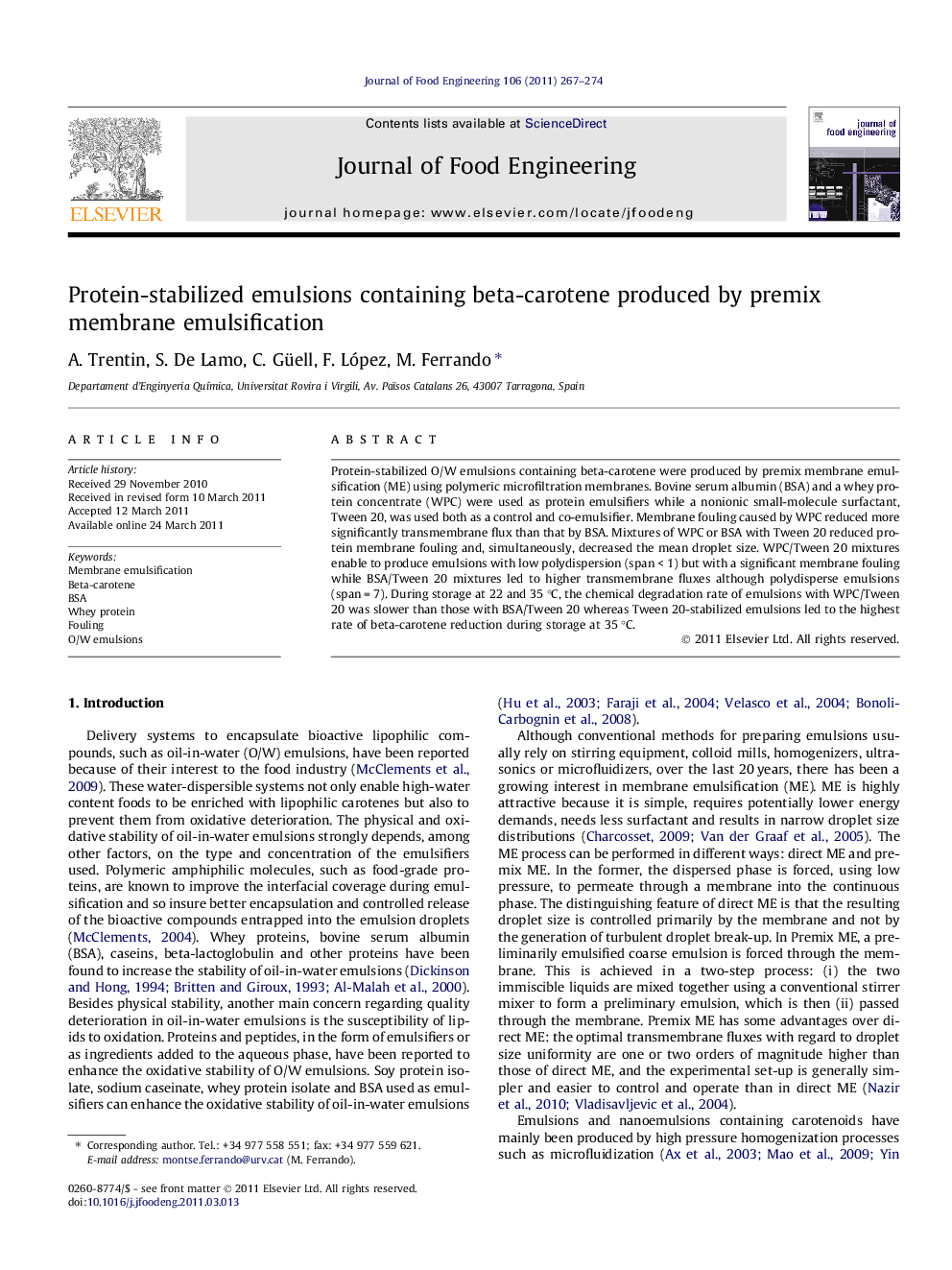| Article ID | Journal | Published Year | Pages | File Type |
|---|---|---|---|---|
| 10278110 | Journal of Food Engineering | 2011 | 8 Pages |
Abstract
Protein-stabilized O/W emulsions containing beta-carotene were produced by premix membrane emulsification (ME) using polymeric microfiltration membranes. Bovine serum albumin (BSA) and a whey protein concentrate (WPC) were used as protein emulsifiers while a nonionic small-molecule surfactant, Tween 20, was used both as a control and co-emulsifier. Membrane fouling caused by WPC reduced more significantly transmembrane flux than that by BSA. Mixtures of WPC or BSA with Tween 20 reduced protein membrane fouling and, simultaneously, decreased the mean droplet size. WPC/Tween 20 mixtures enable to produce emulsions with low polydispersion (span < 1) but with a significant membrane fouling while BSA/Tween 20 mixtures led to higher transmembrane fluxes although polydisperse emulsions (span = 7). During storage at 22 and 35 °C, the chemical degradation rate of emulsions with WPC/Tween 20 was slower than those with BSA/Tween 20 whereas Tween 20-stabilized emulsions led to the highest rate of beta-carotene reduction during storage at 35 °C.
Related Topics
Physical Sciences and Engineering
Chemical Engineering
Chemical Engineering (General)
Authors
A. Trentin, S. De Lamo, C. Güell, F. López, M. Ferrando,
